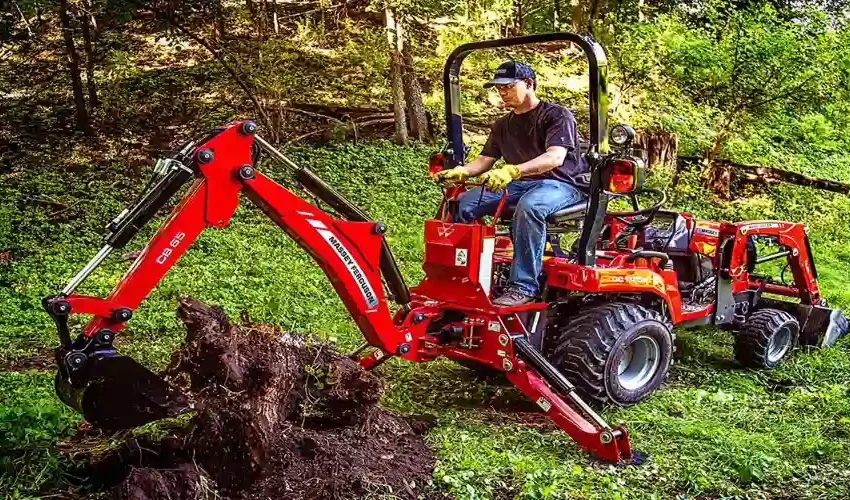A grapple attachment is a must-have for clearing away large aboveground debris and material. Many grapple types have an open “skeleton” bottom to sift out smaller, unwanted debris.
Choosing the right grapple is an important step in increasing the operating capacity of your skid steer or compact tractor. Make sure the cylinders, hoses, and couplers are made of high-quality, dent-proof materials.
1. Use a Hydraulic Pump
When hydraulic systems run smoothly, the fluid they move should maintain a consistent pressure. This is why it is important to keep an eye on your system’s fluid levels and clean its filters to prevent air from working its way into the hydraulic system.
Typically, hydraulic pumps work well over a broad range of pressures, but they can suffer from cavitation as the parts wear out. This problem results in heat build-up and loss of pressure. It also leads to rattling and screeching noises.
Unlike most grapple attachments, the Frontier mechanical grapple does not require a third function hydraulic or electric valve for the top jaw to open and close. This eliminates the need for a learning curve on joy stick operation and lets you continue with your normal loader bucket operating techniques.
2. Use a Hydraulic Cylinder
Grapples are great for grabbing and moving debris, but they are not always as effective as your loader bucket. A hydraulic cylinder can help your grapple perform better.
Hydraulic cylinders get their power from pressurized hydraulic fluid. They consist of a cylinder barrel and a piston rod that is connected to the cylinder head. The cylinder barrel is divided into two chambers by the piston: the bottom, called the cap end, and the rod side, also known as the piston end.
Single-acting cylinders have ports at only one end of the barrel, which means the force of hydraulic pressure only operates in one direction (push or retract). Double-acting cylinders have ports at both ends and utilize an internal retraction spring or gravity to return the rod. So click this link for buy this product https://theredbarnguy.com/product/grapple-for-compact-tractor-cid-54-gpm/.
3. Use a Hydraulic Hose
A hydraulic hose is a flexible tubing that carries fluids such as oil. It has an inner tube that is reinforced with a wire sheath or other material, and a protective cover. Its cover can be made from synthetic rubber, thermoplastics, or PTFE (commonly known as Teflon).
It’s important to use an appropriate hydraulic hose for your job, as different materials have varying chemical compatibilities. You’ll also want to choose a hose that’s designed for the environment where it will be used.
A mechanical grapple is easy to hook up to your loader. Just attach the hoses to the hard lines that run out from the loader arm, and connect the mechanical grapple to those hoses with a coupler. Then, simply raise the loader, open the upper jaw of the grapple using the loader bucket cylinders, and lower it over your debris pile.
4. Use a Hydraulic Cylinder Guard
A cylinder is built to hold hydraulic fluid pressure inside its walls throughout its lifetime. The force that the cylinder produces is the product of system pressure multiplied by the area of the internal piston surface upon which that pressure acts.
Cylinder rods are typically machined from high strength steel and coated with a variety of wear-resistant materials. A patented* “SEAL SAVER” opens and closes like an accordion over the cylinder rod and helps to prevent dirt, sand and grit from entering the hydraulic system through the rod seals and scoring the rod or damaging the cylinder.
Replacing a grapple cylinder is as simple as taking the protective cover plate off, removing the snap rings and bushings, and then pulling out the two hinge pins. A hammer may come in handy for tapping the hinge pins if they’re tight.
5. Use a Hydraulic Cylinder
A grapple is a handy do-it-all attachment that elevates your sub-compact tractor to new heights. It helps you move brush piles, transport medium boulders and eradicate thick underbrush or invasive plants crewlogout. It also makes it easy to remove and carry logs without any manual labor.
A hydraulic cylinder is the internal component that separates the chambers and allows oil pressure to effect the piston’s movement in two ways – up or down. It is connected to a component that the operator wishes to move in a specific way by either a screwed or flange connection.
Hydraulic cylinders need to be protected from wear, corrosion and pitting, which can scrape on seals, contaminate the hydraulic fluid and cause the cylinder rod to break. Coating techniques such as Chrome (Nickel) Plating, Lunac 2+ duplex and Laser Cladding are commonly used.












